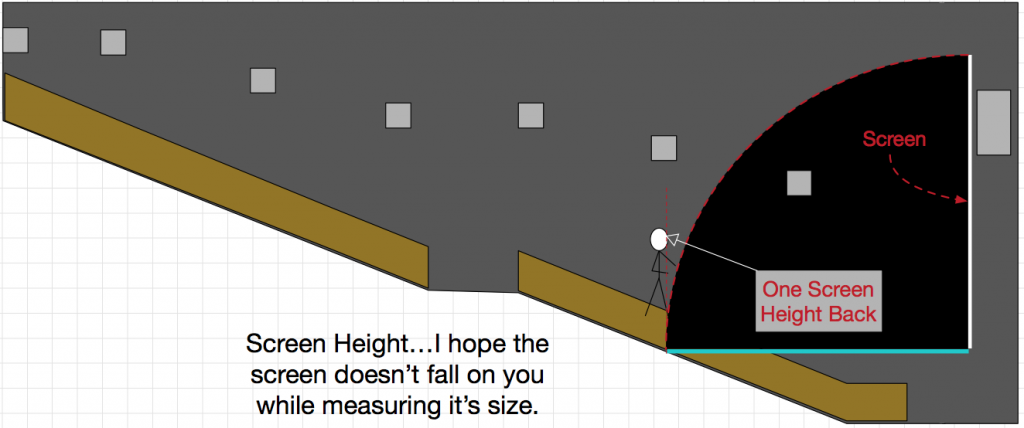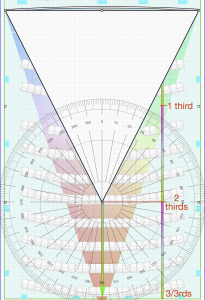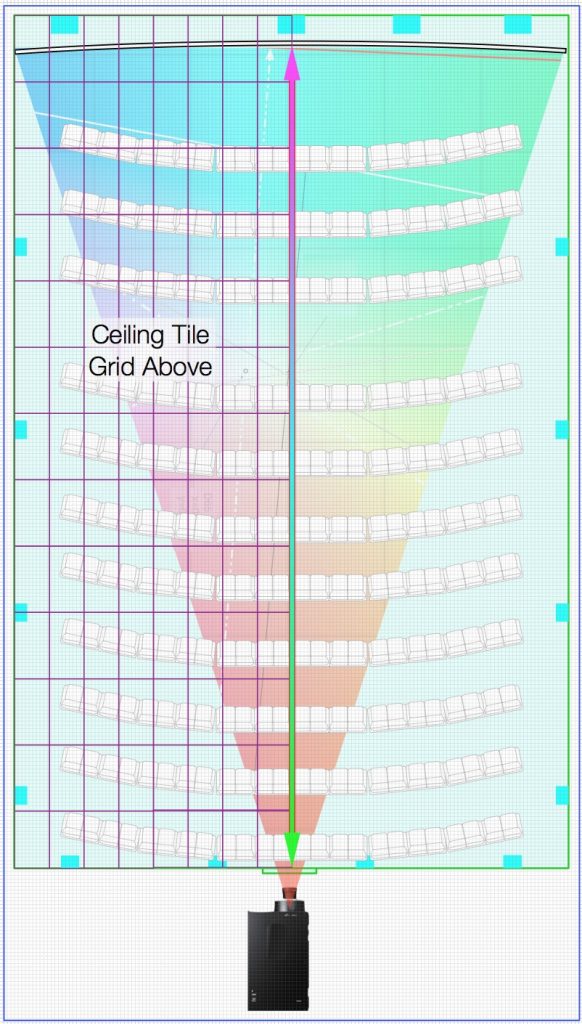- Home
- Courses
- Cinema Exhibition Training
- Training for Non-Technical Cinema Employees
Curriculum
- 7 Sections
- 47 Lessons
- Lifetime
- Artistic Intent – Why We Are HereThe Producers and Directors all believe that if they make their vision come to life – make their story into a movie – it will be shown in a way that allows the audience see and hear what they created with the same splendor they realized. Were they wrong?2
- Quality Management BasicsIf something is managed properly, then there is control over the quality of the items being delivered, and assurance that the end user will be satisfied. Quality Management | Quality Control | Quality Assurance12
- 2.1Ideas Behind The Checklist
- 2.2Security and You
- 2.3Training and You – and the ISO 9001 Management System – Part 1
- 2.4Routines to Self-Certify – Checklists and Employee Training – Part I
- 2.5Routines to Self-Certify – Checklists and Employee Training – Part II
- 2.6How to: Manager’s Walk Through
- 2.7How to: Manager’s Walk Through – Part 2
- 2.8Units of Measurement25 Minutes
- 2.9Where to Judge The Auditorium
- 2.10Forensics, Encryption, KDM, CMS, FLM and 3 Letter Acronyms
- 2.11Alternative Content = Non-Cinema Tech
- 2.12Units of Measurement – Part 2
- Cinema Basics – AudioSome say that a movies sound is 50% of the movie. So, it better be good, eh?7
- Cinema Basics – PictureSound has nuance. Picture has a thousand words for nuance. Let's learn some.7
- Making MeasurementsYour picture and sound equipment get calibrated according to a schedule that management thinks is appropriate for your facility – sometimes in 6 month or 12 month or 18 month intervals. But we all know that things happen in between. With the right tools, you can become the judge.4
- Accessibility EquipmentSome of our customers use the large speaker systems to know what the actors are saying, some read the words with special "closed caption" equipment...some listen to special tracks on headphones. The equipment is called Accessibility Equipment. We have to understand it and test it to make certain our customer gets the best experience possible.14
- 6.1The Other-Abled, and You
- 6.2Accessibility To Inclusion In Cinema – Prelude
- 6.3Promise, Promises and Great Expectations
- 6.4The Access Community
- 6.5Accommodation, In General
- 6.6Accommodation, Open Captions
- 6.7Accommodation, Closed Captions
- 6.8No Technology Before Its Time
- 6.9Industry Coordination
- 6.10Different Paths; …and Finally, Results
- 6.11DCP Production – Narration and Closed Caption Creation
- 6.12Currently Available – “Personal” Closed Caption Solutions
- 6.13Specialized Audio Systems for the Blind and Partially Sighted
- 6.14Signing In Cinema
- EmergenciesLife happens in real time. Sometimes we read about it. More rarely, we are there. And after, we wish that we could have practiced a little bit before being thrown into it.1
Where to Judge The Auditorium
There is no perfect answer for “Where should I be to judge the screen and sound system?”
Actually, we don’t need to be in a “perfect” place. We just need a consistent place. That means, we measure from the same place every time …and make certain everyone is trained to measure from the very same place every time. That way the technician will know that an increase or decrease is not caused by measuring from a different place.
Still…the question is: Where?
One group of experts will say that you should judge from so many “Screen Heights” away.
A screen height is exactly what it sounds like. But although it seems obvious – just look at how high the screen is – it can be a little difficult to evaluate exactly. In the movie theater, if a screen is 65 feet wide (20 meters), then the height is 27 feet high (8.5 meters). Maybe. Because there are two different standards for screens.
After you figure how high the screen is – depending on which expert you listen to – you go back 2 screen heights to judge things.
- Is the screen 64 feet wide? (19.5 meters wide)
- That means that the screen is 36 feet high, so go back 54 feet back from the screen (which is 17 meters).
- Is the screen 32 feet wide?
- That means the screen is 18 feet high, so go back 27 feet back. (8.5 meters in most of the world!)
- A 16 foot wide screen (4.9 meters)?
- A 9 foot high screen means you go back 18 feet (5.5meters).
(Apologies to all those who hate math.)
Masking the Problem
One problem with this process is that sometimes the screen is wider or taller than other times. That’s because movie screens are supposed to have a movable piece of wood, totally wrapped in light-absorbing clothe, called ‘masking’. This makes a black barrier on the sides, top and bottom. These pieces are moved with motors and chains. They change positions depending on how the movie is supposed to look.
There are two main categories how movies are supposed to look – Flat and Scope.
Flat is more square, so the apparent screen height goes higher, and the sides come in to make the screen more narrow. Scope is obviously more wide than tall. In a general sense, Scope allows more scenery and space around the actors, and Flat keeps the actors at the center of the story. (We will learn more about Flat and Scope in the lessons What Does It Mean: Scope and Flat?.
An auditorium can be either, then use masking to create the other size. If you are going to use the screen height method, you need to use the type that gives the greatest height.
 There is another technique that we won’t discuss but it should be known in case you have to deal with an engineer. They use ‘viewing angle’ as the measurement of screen size and measurement position. They might say that you need to sit some place where your viewing angle is between 30 degrees and 40 degrees and measure from someplace that is 45 to 60 degrees. If you want to get the tools to measure this, have fun. This may be the most natural distance since it puts the edge of the screen at a comfortable position for your sight. You see everything onscreen without seeing too much of anything else – especially those glaring EXIT signs!
There is another technique that we won’t discuss but it should be known in case you have to deal with an engineer. They use ‘viewing angle’ as the measurement of screen size and measurement position. They might say that you need to sit some place where your viewing angle is between 30 degrees and 40 degrees and measure from someplace that is 45 to 60 degrees. If you want to get the tools to measure this, have fun. This may be the most natural distance since it puts the edge of the screen at a comfortable position for your sight. You see everything onscreen without seeing too much of anything else – especially those glaring EXIT signs!
But it still doesn’t easily put you in the same row consistently, or make it easy to tell another person who is trying to do the same thing as you do.
 There is another method that technicians use for the measurement point. They say ‘two-thirds back’. This means that they will divide the length of the auditorium by 3, then multiply by 2, and place their equipment there.
There is another method that technicians use for the measurement point. They say ‘two-thirds back’. This means that they will divide the length of the auditorium by 3, then multiply by 2, and place their equipment there.
Imagine that the auditorium is 90 feet long, you divide by 3 to get 30 feet, then multiply by 2 to get 60 feet. Go 60 feet from the screen, walk to the center of that row and set up for your testing.
Easier to write than do?
 Because who really knows the length of the auditoriums?
Because who really knows the length of the auditoriums?
There is an easy way!
One way to figure out the length is to count the ceiling tiles of the auditorium. Count them, divide by 3 to get the 1/3rd amount, and count them again from the back wall until you reach that 1/3rd amount. Find the closest convenient row, walk to the middle, get comfortable. You are 2/3rds back!
In the example here, we look up and count – there are 12, almost 13, tiles from front to back. If we divide by 3 we get 4-plus a little. We go to the back, count forward 4 plus a little. Look down and choose the most convenient row to sit in. Walk to the center seat.
Oh, and where is the center seat? Look up to see the port window that the projector shines though. That will almost always be the center of the screen. If the screen isn’t in the center of the room – for example, if there is an exit door on one side of the front wall, but not on the other side – the center of the room for the sound system will be a couple of feet to one side of the port window. Make your adjustment but don’t go crazy. It really won’t make too much of a difference for simple tests.
If you are measuring sound, you want to duplicate the height of people’s ears, but we also don’t want to have the sound blocked by, or reflected by, the chair in front. Modern luxury chairs can affect a microphone if it is too close to your test set-up. But again – let the real techno-people go crazy. You just want to be consistent, and of course, if the boss has told you to do it a certain way, do exactly that.
Here is the most important part: Have fun. Notice a little more each day. You represent the customer, you represent the movie makers, you represent the cinema owner’s desire and everyone’s responsibility to give the best presentation possible. Be proud of that.
Let’s talk about that Online Checklist next, OK?